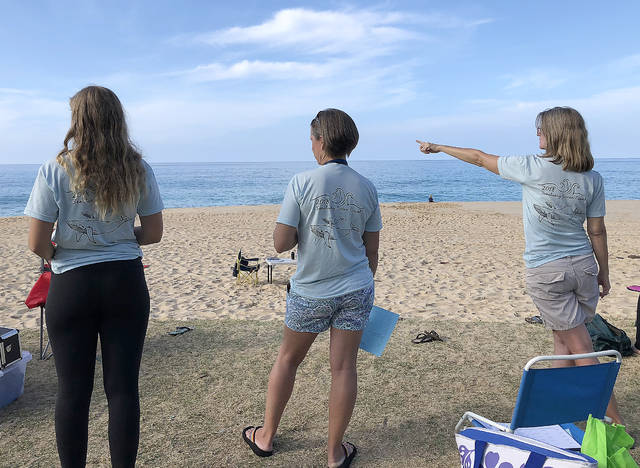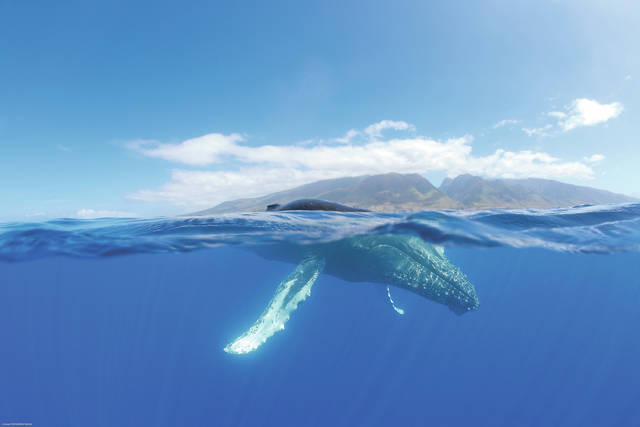KAILUA-KONA — The annual humpback whale ocean count will take place despite the federal government shutdown thanks to volunteers and the National Marine Sanctuary Foundation.
Ocean Count is a community citizen science project that occurs during the peak of whale season in the months of January to March to promote public awareness about humpback whales. Although removed from the endangered species list in 2016, most humpback whales remain a federally protected species.
It’s normally conducted by the Hawaiian Islands Humpback Whale National Marine Sanctuary, which strives to protect humpback whales and their habitat in Hawaii. However, this year, the National Marine Sanctuary Foundation, which is the nonprofit partner of the National Marine Sanctuary System, will coordinate the count because of the shutdown.
“Through the support of dedicated volunteers, Ocean Count has provided more than 20 years of data that supplements scientific research and helps monitor humpback whales during their annual migration to the Hawaiian Islands,” said Kris Sarri, the foundation’s president and CEO.
“Fewer humpback whales are being observed in the main Hawaiian Islands in recent years, and we don’t know why,” she added. “Unfortunately, critical sanctuary research that could help us understand these changes is on hold indefinitely due to the government shutdown.”
Over 300 volunteers are expected to participate in the foundation-coordinated whale count on Jan. 26 statewide. Volunteers are responsible for tallying the amount of humpback whales they see from shore, and documenting their surface behavior.
Other counts are scheduled for Feb. 23 and March 30 throughout the state. All counts take place from 8 a.m. to 12:15 p.m.
“It’s a way to spread the word about what’s happening with whales in our area,” said George Winchell, who is the site leader at the Four Seasons Resort Hualalai Ocean Count site and has been a volunteer for almost 15 years. “Most of the people who come are visitors, so it’s a good way to introduce them to our whale population.”
Each year, approximately 11,000 humpback whales migrate from Alaska to Hawaii where they mate and give birth during the winter. However, within the past four years, that number has greatly declined, with an estimated 50-80 percent drop in humpback whale sightings.
Ongoing speculation and many theories have developed about the sudden decline in the whale populations presence in Hawaii. In November, a group of whale experts met in Honolulu to better understand the sudden decrease of these marine mammals, and find a solution for it.
Information presented showed a correlation between warmer ocean temperatures and missing whales.
It was discovered that three factors have attributed to the unusually heated waters in the Alaska region since 2014 — the same year scientists noticed a drop in whale sightings in the islands. These are: a change in the ocean current — called the Pacific Decadal Oscillation, a large “blob” of warm water, and a warm El Nino period in 2016.
The sudden temperature change could cause the whales to move or spread out to cooler northern waters as a way to find prey and food such as krill. Although scientists agree that the decline of whale sightings in Alaska and Hawaii is due to their change or search for food, it is still unknown whether there is a larger issue impacting the habitat.
In the last three years, Winchell’s noticed firsthand that there has been a definite decrease in whale sightings specifically at the Four Seasons Resort Hualalai.
“That doesn’t mean that there’s less whales, but it does mean that there are less whales within our observation area,” he said.
There are 21 whale count locations on the Big Island.
Anyone interested in volunteering can register in advance at www.oceancount.org. More information can also be obtained by emailing oceancount@marinesanctuary.org.


